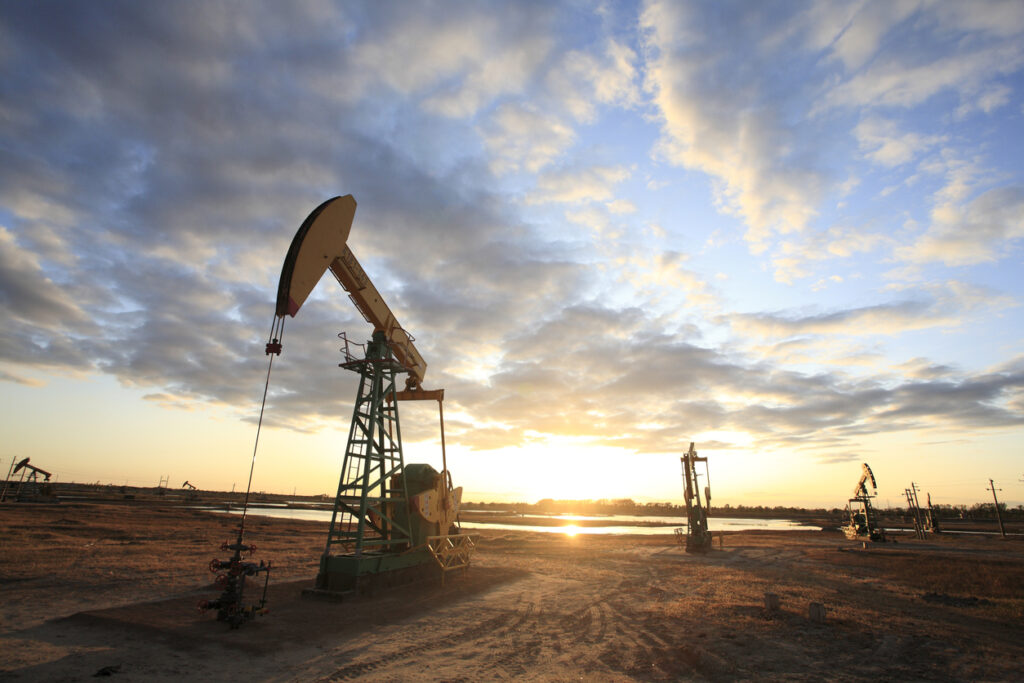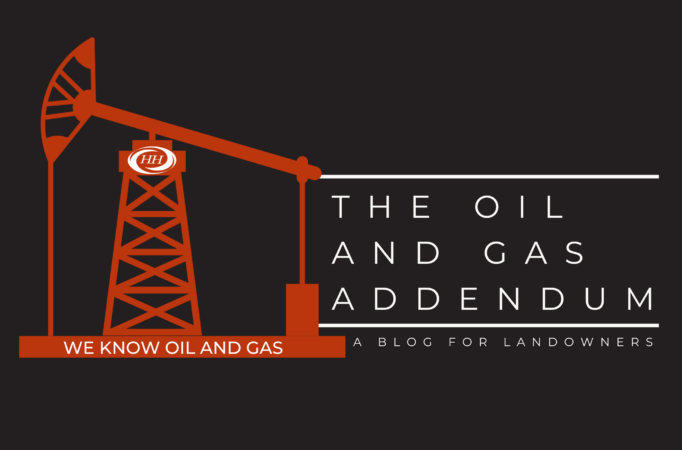The Oil and Gas Addendum
Can "Free Gas" Clauses Refute the Artificial Wellhead Value Suggested by Drillers?

An oil and gas lease with a “free gas” clause may be a valuable tool for landowners to push back against drillers’ inaccurate attempts to value gas at the “wellhead”. Prior to the advent of Marcellus Shale drilling, "free gas" clauses were common in many oil and gas leases across Pennsylvania. As we have written before, a “free gas” clause allows the landowner to use a fixed volume of gas produced from a well on the property for domestic purposes. See, Free Natural Gas on Property: Who’s Entitled to Free Gas? (February 17, 2012) Frequently, this “free gas” allowance contemplated in a “free gas” clause is between 150,000 cubic feet and 300,000 cubic feet per year. A “free gas” clause typically requires the landowner to connect a gas line from the well to the house.
An obvious concern associated with such “free gas” allowances is what happens if the landowner uses more than the allotment of “free gas” authorized by the lease. Using volumes of gas in excess of the “free gas” allowance is known as “overburn”. See, Adams v. Public Utility Commission, 819 A.2d 631 (Pa. Commw. Ct. 2003).Many “free gas” clauses (also known as “house gas” clauses) stipulate that users are charged for this “overburn” gas. An example of such a provision is found in Adams, where the lessors were entitled to 200,000 cubic feet of natural gas per year, with the lessee, Manufacturers Light and Heat Company, possessing the right “. . . to charge for gas drawn in excess of 200,000 cubic feet in accordance with its prevailing rates for domestic customers.” Id. at 633.
Many leases with “free gas” clauses contain similar provisions, where landowners are charged at the prevailing rates for domestic customers in that same area for the volume of "overburn" gas that is used from a well on the landowner’s property. These contractual arrangements establish the value of gas at a specific time and a specific place; namely, the physical “wellhead” in the field that supplies the “free gas”. For instance, consider a “free gas” clause that requires volumes of “overburn” gas to be paid at the prevailing domestic rate in that area. Assume that rate is $3.85 per unit. As a result, the value of the gas produced from the well at that location is $3.85 per unit.
In the Marcellus Shale era, "free gas" clauses have fallen to the wayside, with drillers offering a payment in lieu of a "free gas" allowance, if anything. Safety concerns associated with the large volumes and high pressures of shale gas are often cited as reasons why "free gas" clauses are less common in modern Marcellus Shale leases. But, that should not be the end of the utility of "free gas" clauses; particularly for landowners with leases that contain a “market enhancement” royalty clause (“MEC”).
MEC leases typically prohibit the deduction of any post-production costs that are incurred transforming the raw gas into a marketable product. Once the gas is in marketable form, the MEC generally allows the driller to deduct further costs only if those costs actually enhance the value of the raw gas stream. A frequent point of dispute between drillers and landowners is whether the downstream costs actually resulted in enhancing the value of the gas and resulted in a better price. On its face, this seems like an easy question to answer. But, in order to answer this question, logic dictates that you must first have a baseline value and price from which you can measure any increase in value and better pricing. In other words, how and where do we set the initial value of the gas so we can measure if there has been an actual increase in value and a better price attained as the gas moves downstream?
Unsurprisingly, drillers often contend that everything they do after bringing gas to the surface enhances value and results in a better pricing for the gas. But, in general, there is no commercial marketplace at the "wellhead" to value the gas at that location. In the Marcellus Shale region, gas is rarely sold at the wellhead as there is generally no competitive market at that location. Most shale gas is sold on the interstate pipeline network. Given the lack of any true, competitive marketplace at the wellhead, an argument can be made that the gas is not marketable until the driller moves that gas to the actual marketplace (i.e., the interstate pipeline network). See, Pummill v. Hancock Exploration, LLC, 414 P.3d 1268 (Okla. Ct. App. 2018) (gas not in marketable form until it reaches the intended market for that gas); Cooper Clark Foundation v. Oxy USA, Inc., 469 P.3d 1266 (Kansas Ct. App. 2020) (“ [T]he concept of marketability is tied to the market for the gas” ). If there is no market to sell gas at the wellhead, then the gas is not “marketable” at that location.
Drillers must therefore incur costs to make the gas marketable by physically moving the gas to the marketplace and placing the gas in a condition that is acceptable to buyers at that marketplace. The costs of moving gas in a gathering system and undertaking dehydration/processing activities are all associated with making the gas “marketable” when there is no commercial marketplace at the wellhead for that gas.
Since following this logic would prevent drillers from charging substantial costs to MEC landowners, drillers instead often employ the "net back" or "work back" formula to attempt to establish the value of gas at the wellhead.[1] This does not establish the real value or price of gas at the "wellhead"; it is nothing more than an accounting formula that produces an artificial value and is not applicable to many leases in the first place. See, Is the Value of Your Gas Really Being Enhanced? (July 1, 2022). Through this method, drillers start with the value of gas somewhere else (frequently the interstate pipeline) and subtract costs incurred between that point and the wellhead, and claim the result is the value of the gas at the wellhead. This method is designed for one purpose: to show that the end value is higher than the value of gas at the “wellhead”.
In general, the value of gas is set at the commercial marketplace, which is the interstate pipeline network. But, if drillers charge MEC leaseholders for the drillers’ costs for moving the gas to the interstate pipeline and costs for placing the gas in a condition acceptable to buyers in that interstate pipeline marketplace, then “free gas” clauses with "overburn" provisions may be useful as a tool for landowners to push back against the drillers’ contention that those activities enhanced the value or resulted in a better price.
If drillers have agreed to value the “overburn” gas volume at the "wellhead" based on domestic rates, it is disingenuous for drillers to argue that the value of gas at that location is lower than those domestic rates. Again, consider the example above, where the “overburn” provision in a “free gas” clause sets the “overburn” charge at the domestic rate in the area. That rate in our example is $3.85 per unit. If the driller employs the “net back” or “work back” method to claim that its gas at that wellhead location was allegedly only worth $2.00 per unit, the “free gas” clause provides a specific means to challenge that valuation. The driller must either acknowledge that the “net back” method does not establish a wellhead value, or the driller must argue that rates established for small volumes of gas like “overburn” are not representative of the price of gas at that location. In either instance, then, the focus turns to the value of the gas at the competitive, commercial marketplace, the interstate pipeline network.
Again, there is no substitute for the actual, commercial marketplace value for produced shale gas. Moreover, the absence of a competitive, commercial marketplace means that there is no value and nothing to “enhance”. But, if drillers advance the "net back" calculation to establish the value of gas at the "wellhead", landowners should make use of all data points to counter that artificial valuation. See, The Net-Back Method Does Not Result In Better Pricing to Justify Deduction Under Market Enhancement Clauses (October 16, 2021). "Free gas" clauses could help in this regard.
If you have a MEC lease and believe that you are being charged with costs that are not allowed, contact oil and gas attorneys Robert J. Burnett at rburnett@hh-law.com or 412-288-2221 and Brendan A. O'Donnell at odonnellba@hh-law.com or 412-288-2226
[1] In Kilmer v. Elexco Land Services, 990 A.2d 1147 (Pa. 2010), the oil and gas industry promoted royalty calculation via the “net-back” method. The Pennsylvania Supreme Court observed that the goal of the “net-back” method is to “determine the value of the gas when it leaves the ground (hereinafter ‘at the wellhead’) by deducting from the sales price the costs of getting the natural gas from the wellhead to the market.”
About Us
Oil and gas development can present unique and complex issues that can be intimidating and challenging. At Houston Harbaugh, P.C., our oil and gas practice is dedicated to protecting the interests of landowners and royalty owners. From new lease negotiations to title disputes to royalty litigation, we can help. Whether you have two acres in Washington County or 5,000 acres in Lycoming County, our dedication and commitment remains the same.
We Represent Landowners in All Aspects of Oil and Gas Law
The oil and gas attorneys at Houston Harbaugh have broad experience in a wide array of oil and gas matters, and they have made it their mission to protect and preserve the landowner’s interests in matters that include:
- New lease negotiations
- Pipeline right-of-way negotiations
- Surface access agreements
- Royalty audits
- Tax and estate planning
- Lease expiration claims
- Curative title litigation
- Water contamination claims

Robert Burnett - Practice Chair
Robert’s practice is exclusively devoted to the representation of landowners and royalty owners in oil and gas matters. Robert is the Chair of the Houston Harbaugh’s Oil & Gas Practice Group and represents landowners and royalty owners in a wide array of oil and gas matters throughout the Commonwealth of Pennsylvania. Robert assists landowners and royalty owners in the negotiation of new oil and gas leases as well as modifications to existing leases. Robert also negotiates surface use agreements and pipeline right-of-way agreements on behalf of landowners. Robert also advises and counsels clients on complex lease development and expiration issues, including the impact and effect of delay rental and shut-in clauses, as well as the implied covenants to develop and market oil and gas. Robert also represents landowners and royalty owners in disputes arising out of the calculation of production royalties and the deduction of post-production costs. Robert also assists landowners with oil and gas title issues and develops strategies to resolve and cure such title deficiencies. Robert also advises clients on the interplay between oil and gas leases and solar leases and assists clients throughout Pennsylvania in negotiating solar leases.

Brendan A. O'Donnell
Brendan O’Donnell is a highly qualified and experienced attorney in the Oil and Gas Law practice. He also practices in our Environmental and Energy Practice. Brendan represents landowners and royalty owners in a wide variety of matters, including litigation and trial work, and in the preparation and negotiation of:
- Leases
- Pipeline right of way agreements
- Surface use agreements
- Oil, gas and mineral conveyances

